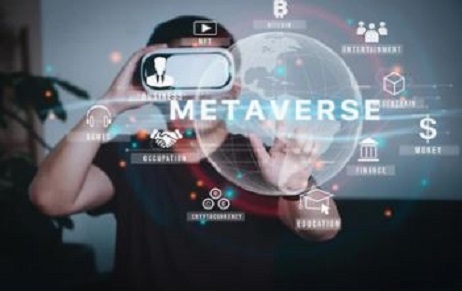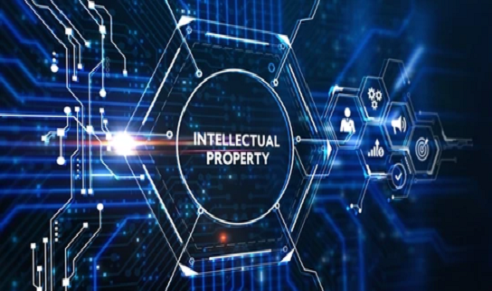Introduction Robert J Thieruf in his book “Virtual Reality Systems for Business” explains Virtual reality…
Copyright Protection of Fictional Characters
Introduction
Since childhood, fictional characters like Mickey Mouse, James Bond, and Donald Duck have formed a part of our lives and still form for many children. The people who created these characters are true artists. They used their imagination to create interesting fictional characters and converted the idea into expression.
Converting an idea into suggestions requires significant effort from the creator. The creator uses all his labour and intellect to form the character. No one would like to get their artistic creation exploited in the name of others.
So, to prevent the apparent misuse of own artistic creation, the idea of copyright protection came into being. While countries like the United States of America (USA) have gone far in recognising the copyright protection of fictional characters, countries like India remain ambiguous.
The USA is the only state who has laid down multiple tests such as the “Story being told test”, Graphical and word portrait characters and well-delineated tests, etc.
But does India have any laws or tests as are in the USA? Are there any provisions which govern the Copyrightability factor for fictional characters in India?
In this article, an attempt has been made to understand the specific context of copyright protection for fictional characters in India.
Copyrightability Of Fictional Characters: Is It Protected In India?
There is no explicit legislation in India that covers the protection of fictitious characters. In India, the only law addressing copyrightability is the Copyright Act of 1957. The original literary, artistic, dramatic, and musical works are protected by Section 13 of the Copyright Act of 1957. Films and sound recordings are likewise protected by this law.
[Image Sources: Shutterstock]

Malayala Manorama vs. VT Thomas[ii] is the only Indian case in which the Kerala High Court opined that the defendant was the copyright owner, which subsisted on a set of fictional characters. In this instance, even though he was not hired by Toms Boban and Molly, Mr. Thomas was permitted to continue sketching the book’s characters. Even when Mr. Thomas started working there, the publishing business was unable to assert copyright on the character.
The court in this case concluded that VT Thomas invented the persona before to beginning work for the publishing business. Therefore, he ought to be permitted to continue exploiting his labour even after losing his job. The Court further stated that a publishing firm should not be granted any copyright on a character because they had no involvement in the creation of the character.
They only have a limited amount of control over certain comic strips (episodes) made by VTThomas while employed for publication in the newspaper. It drew a distinction between cartoon character-based drawings and cartoon characters created independently.
As a result of the ruling, it may be deduced that while Mr. Thomas, the character’s owner, retains copyright over the character, copyright over any drawings created utilising the character vests with the publishing business (as an artistic work).
As a result, in this instance, the publishing business was prohibited from hiring further writers to produce fresh episodes featuring the same character. The characters’ copyright protection was acknowledged by the court. The specifics of deciding whether a character is eligible for legal protection and under what conditions must be covered, though.
The characters of “Boban and Molly” were not formally or directly granted copyright protection by the Court, but if the Nichols test is used in the current situation, then it may be impliedly inferred that the characters have copyright protection.
The Court further noted that the author’s cartoons attracted a large audience only as a result of the distinctive qualities and personalities of the characters. They leave a lasting effect on the readers. Therefore, given these conditions, “Boban and Molly’s” characters were sufficiently defined to justify legal protection in the form of copyright.
In another case, Star India Pvt. Ltd v. Leo Burnett,[iii]the unauthorized characters from the well-known Hindi opera “KyunkiSaasBhiKabhiBahuThi” appeared in a detergent commercial. Copyright infringement was deemed to have occurred in this instance. It was alleged that the soap opera characters were protected by copyright and that their authors had not given their permission for their usage in the advertising.
From the aforementioned overview of instances, it is important to note that the Court has considered whether or not a fictional character is covered by copyright in each case. The Court upheld this, although it made no mention of the prerequisite requirements that must be met in order to use copyright law to protect a character.
In this case, the issue of what makes a person eligible for protection under the copyright law was examined. The court opined, “The characters to be merchandised must have gained some public recognition, that is, achieved a form of an independent life and public recognition for itself independently of the original product or independently of the milieu/area in which it appears.”
In Sholay Media and Entertainment Pvt Ltd. vs. Parag Sanghvi and Ors.,[iv]the Delhi High Court fined director Ram Gopal Verma Rs. 10 lacs for purposefully and deliberately filming the remake of the 1975 hit Sholay. This action violates Sholay Media and Entertainment Pvt Ltd’s sole copyright.
The judicial recognition, whether copyright existed in literary characters or not, was highlighted in the case of Arbaaz Khan vs. North Star Entertainment Pvt. Ltd,[v] by the Bombay High Court. The court, while examining whether or not copyright subsists in the character of “Chulbul Pandey” from the Dabangg movie franchise, opined that “As to the general principle that the character is unique and the portrayal of that character as also the ‘writing up’ of that character in an underlying literary work is capable of protection is acceptable.”
Conclusion
Hence it is safe to conclude that Indian Courts haven’t explicitly recognised the protection of fictional characters in India. No specific law or tests have been laid down to deal with this matter.
However, as the economy is advancing, it is witnessed that the entertainment and literary industry is developing at an expedited rate and will further develop in future. Thus, it is a high possibility that in the near future, Indian Courts will propound tests to determine the conditions required to copyright fictional characters that are similar and in consonance with the tests propounded by American courts.
It is further expected that with the growing technology and advancements, copyright law will expand in other undiscovered fields, just like the issue of copyright emerged.
Author: Kaustubh Kumar, in case of any queries please contact/write back to us via email to [email protected] or at IIPRD.
References
India: Exploring Copyright Protection For Fictional Characters, available at: https://www.mondaq.com/india/copyright/1112382/exploring-copyright-protection-for-fictional-characters.
Fictional Characters and Copyright Protection, available at: https://lexforti.com/legal-news/copyright-protection-of-fictional-characters/.
Sourav Kanti De Biswas, “Copyrightability of Characters”, 9 Journal of Intellectual Property Rights, 148-156 (2004).
[i] The Copyright Act, 1957 (Act 14 of 1957).
[ii]AIR 1989 Ker 49.
[iii] (2003) 2 BomCR 655.
[iv] (2015) 3 MIPR 0096.
[v] (2016) SCC OnLine Bom 1812.



